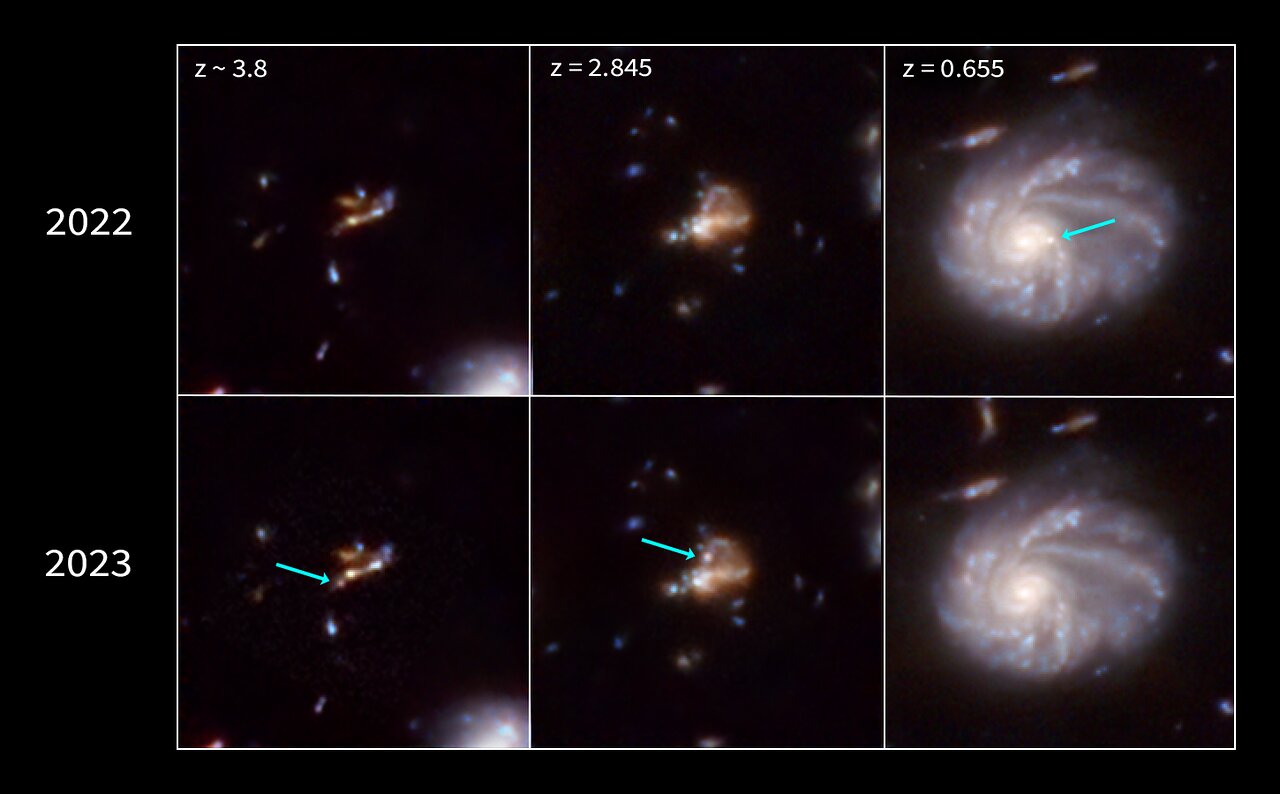Three JADES galaxies with supernovae (2023 vs. 2022)
The NASA/ESA/CSA James Webb Space Telescope is giving scientists their first detailed glimpse of supernovae from a time when our Universe was just a small fraction of its current age. A team using Webb data has identified 10 times more supernovae in the early Universe than were previously known. A few of the newfound exploding stars are the most distant examples of their type, including those used to measure the universe’s expansion rate.
To make these discoveries, the team analyzed imaging data obtained as part of the JWST Advanced Deep Extragalactic Survey (JADES) program. Webb is ideal for finding extremely distant supernovae because their light is stretched into longer wavelengths — a phenomenon known as cosmological redshift.
Prior to Webb’s launch, only a handful of supernovae had been found above a redshift of 2, which corresponds to when the universe was only 3.3 billion years old — just 25% of its current age. The JADES sample contains many supernovae that exploded even further in the past, when the universe was less than 2 billion years old. Previously, researchers used the NASA/ESA Hubble Space Telescope to view supernovae from when the universe was in the “young adult” stage. With JADES, scientists are seeing supernovae when the universe was in its “teens” or “pre-teens.” In the future, they hope to look back to the “toddler” or “infant” phase of the universe.
To discover the supernovae, the team compared multiple images taken up to one year apart and looked for sources that disappeared or appeared in those images. These objects that vary in observed brightness over time are called transients, and supernovae are a type of transient. In all, the JADES Transient Survey Sample team uncovered 79 supernovae in a patch of sky only about the thickness of a grain of rice held at arm’s length.
The team identified a number of high-redshift supernovae, including the farthest one ever spectroscopically confirmed, at a redshift of 3.6. Its progenitor star exploded when the universe was only 1.8 billion years old. It is a so-called core-collapse supernova, an explosion of a massive star.
These findings were presented in a press conference at the 244th meeting of the American Astronomical Society in Madison, Wisconsin. Learn more about these results here.
[Image description: Six space telescope images show close-ups of two different observations (rows) of three different galaxies (columns). Arrows point to bright blobs that are visible in one observation of the galaxy, but not the other.]
Credit:NASA, ESA, CSA, STScI
About the Image
| Id: | JADES8 | |
|---|---|---|
| Type: | Chart | |
| Release date: | 10 June 2024, 21:15 | |
| Size: | 1450 x 900 px | |


